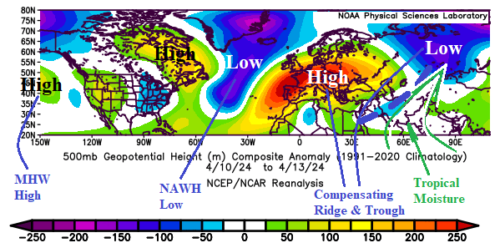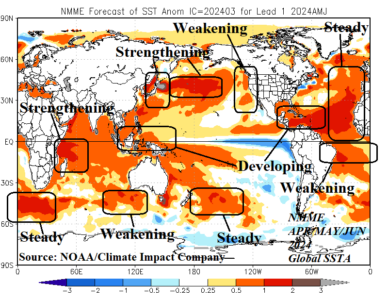04/23/2024, 3:58 am EDT
March 2024 brought the 12th consecutive month of record warm global oceans. The daily global SSTA analysis reveals the influence on record warm global oceans by marine heatwaves (MHW). Several MHW’s are steady or strengthening in the southern hemisphere while the second year of a MHW off the Northwest Africa Coast is regaining strength and a new MHW is forming off the coast of East Asia.
![Climate-Impact-Company-logo-sm[1]](https://climateimpactcompany.com/wp-content/uploads/2023/08/Climate-Impact-Company-logo-sm1.png)



